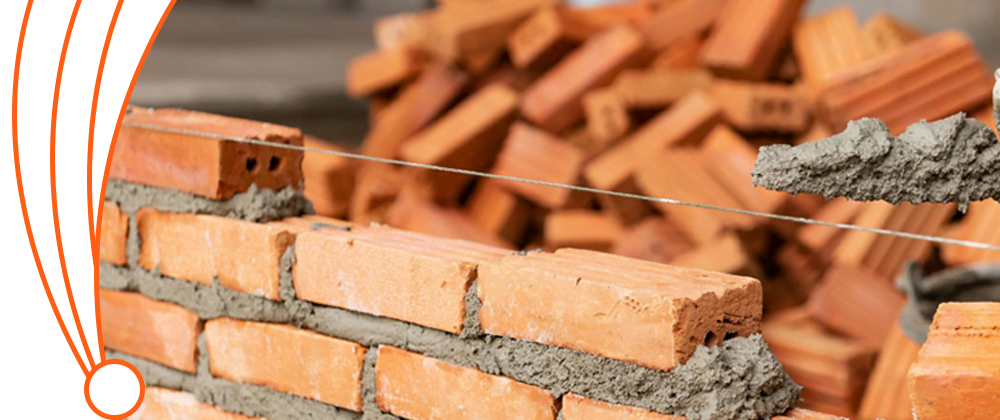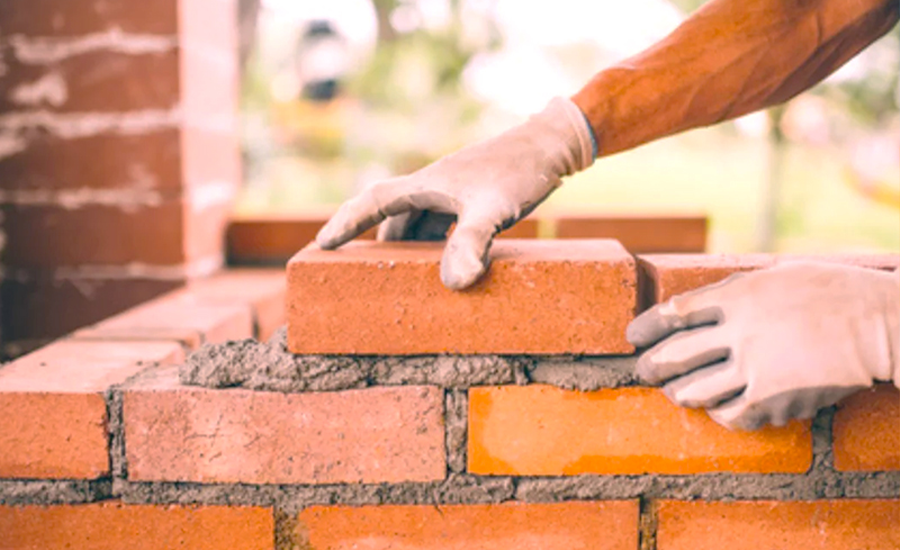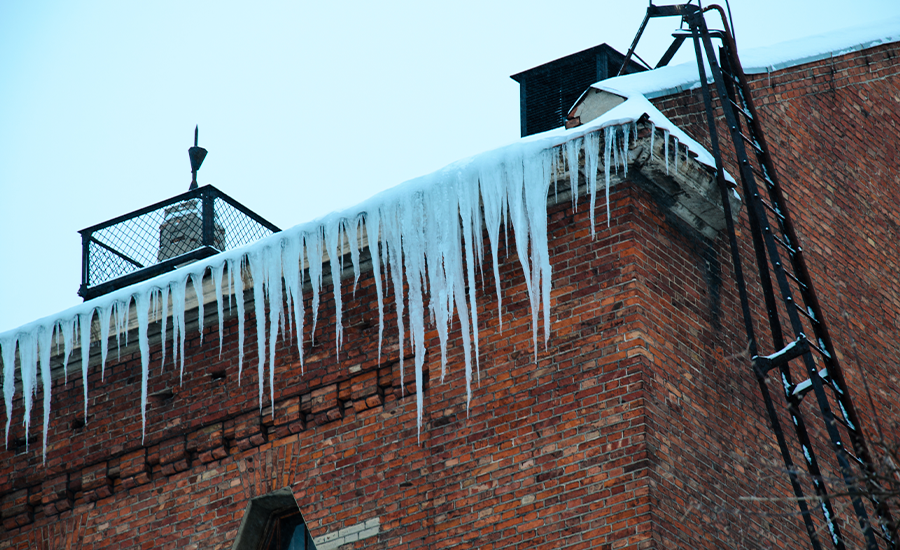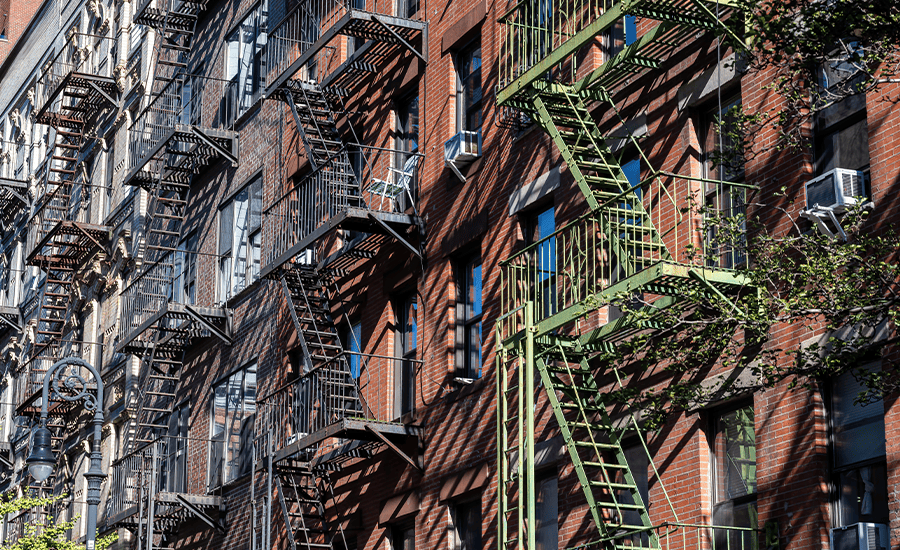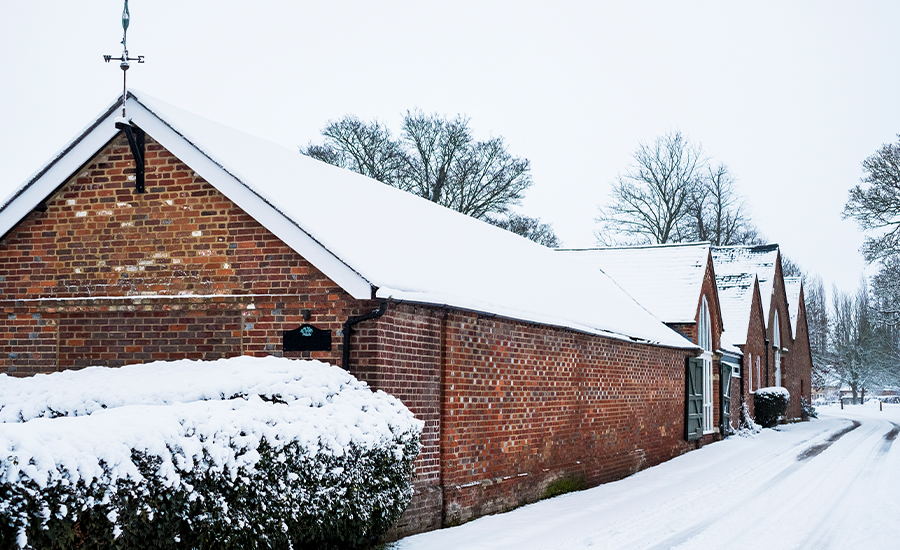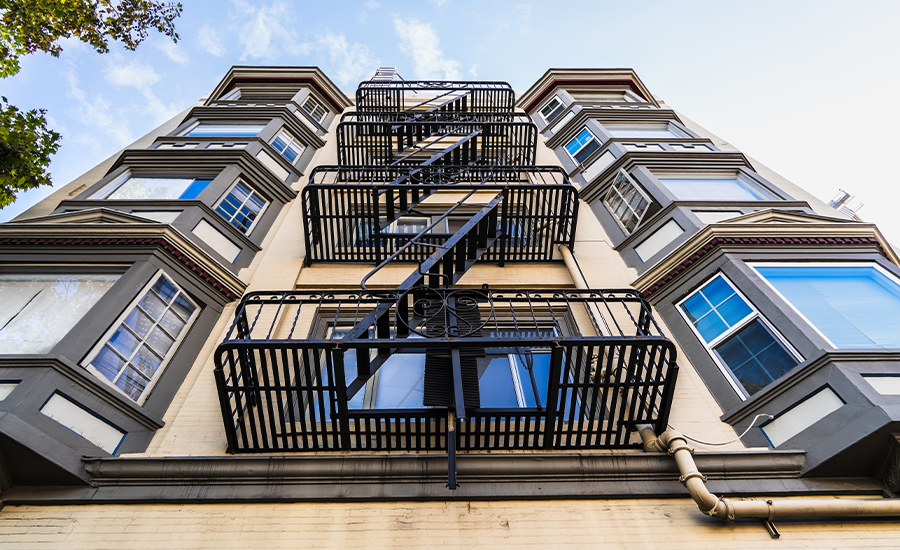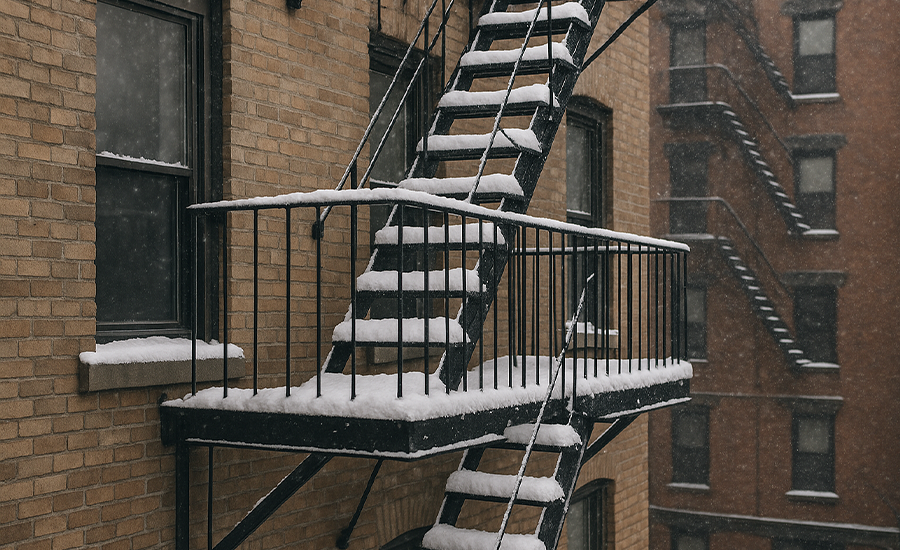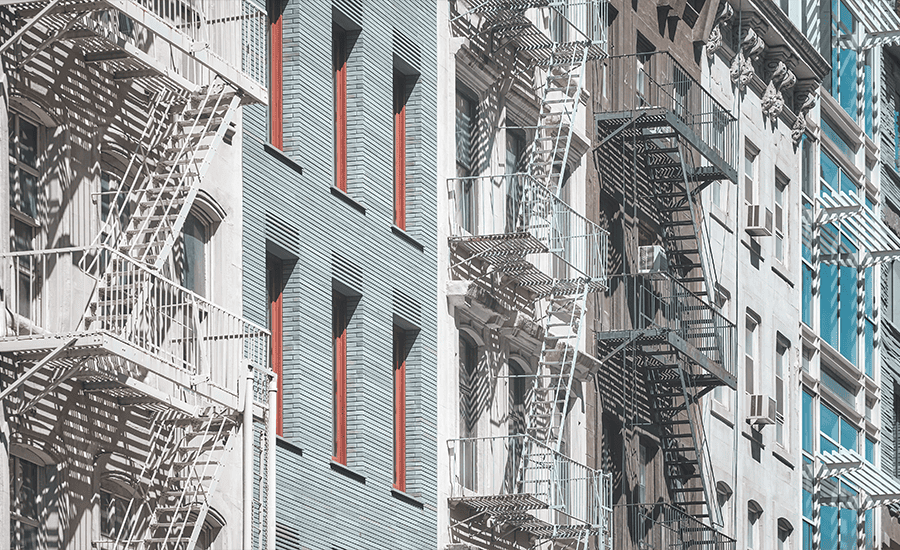Apart from cracks, there is another process, known as points, which is also a vital component in preserving and prolonging the longevity of masonry structures. Mortar joints may become weak due to exposure to weather elements, building movement or sheer fatigue washing over time, moisture penetration, and others. Detecting early signs that the brickwork needs to be repointed will prevent a situation where the need arises when the damage is widespread and the costs are higher.
In this post, we will discuss some of the obvious signs that tell you that repointing is needed, the consequences to expect if the job is not done on time, and tips so that the client does not fall victim to poor-quality repointing services.
Signs That You Need Repointing
The condition of the mortar joint is particularly important in the construction of masonry structures, particularly walls. As specialists, we must know the most obvious symptoms that suggest that repointing work is needed because we know technically what repointing is. It is now worth going through them one by one.
Visible Cracks in Mortar Joints
One of the most obvious signs that you will notice that repointing is necessary is if you find some cracks in the mortar joints. Often, with time, the effects of either weather or structural movement may put pressure on the material and cause cracks through which water may penetrate. If not treated, these cracks will get deeper will cause a problem with the structural support of the building. From this, one has to do a simple visual reconnaissance to establish which of the joints that connect the bricks needs to be repaired due to cracking of the mortar.
Loose or Missing Mortar
Signs of mortar deterioration can be easily identified when you get on the construction site and note that you find missing or loose mortar. Download free Adobe Flash Player. However, crumbling mortar or wholly washed out creates voids that result in water ingress and additional harm to the masonry. In this case, repairing the joint by removing the previous mortar and applying a new one to offer strength and keep the masonry away from harsh weather conditions is good.
Water Penetration
Stains on interior walls, which appear only as small damp patches on walls and floors, mainly in the lower part of the building such as the basement or a ground floor, indicate that water gets into the building through the mortar joints. This is usually brought about by the weakness of the mortar, which cannot hold out water any more. Repointing is required here to close up those joints and stop water from getting in and inflicting additional harm, such as the presence of molds or even a compromise on the structure of the building.
Properties near the coast, especially in Queens, often face increased brick damage due to constant humidity and salty air. Learn more in our detailed blog on how NYC’s coastal weather affects brickwork in Queens.
Crumbling or Powdery Mortar
When the mortar between your bricks or stones is soft to pressure or has a dusty texture, you can be sure that your mortar has recalcitrant surface wear. This level of degradation affects the mortar used to join the bricks, hence the need to re-point the building for cohesion.
Vegetation Growth
Another obvious indication of moisture presence is when moss, algae, or plants grow within the mortar joints. Water-loving plants and vegetation grow in those areas that experience humidity. Nevertheless, the growth of plants and vegetation in the brick sections of the house signals that water is accumulating in the mortar joints. In addition to eradicating such growths by pointing, one will simultaneously cure the moisture issue.
Brick Damage
If stones themselves turn ill or wear, this may be attributed to insufficient mortar support. With time, deteriorated mortar pushes bricks to shift and wear off. This can cause far more extensive harm, which indicates that repointing is necessary to help keep the construction safe and sound.
Loose or Falling Bricks
The earliest indication that a building has a problem, particularly here in the Northeast, is when the bricks begin to crack, turn soft, or even fall out altogether. This mostly happens due to the failure of the mortar joints to support the bricks by allowing them to slip off when stretched for some time. In case you detect this problem, the IMO repointing process is employed to renew the mortar and hold the bricks firmly to prevent them from sliding again.
What Are The Common Signs Of Mortar Damage In Manhattan Townhouses?
Often, there is a problem with the mortar in Manhattan townhouses because of their age and exposure to various weather conditions. Here are the key signs to look for:
Cracked Mortar Joints: Mortar that has developed cracks visible on the bricks is one sign of deterioration. Such cracks may admit water penetration, thus exacerbating the deterioration of the structure or materials the enclosure is intended to protect.
Loose or Missing Mortar: When chunks of mortar are missing or loose, they compromise the structure and expose the bricks to moisture.
Crumbling Mortar: Mortar that crumbles or turns to powder when touched is a sign it’s no longer holding the bricks securely.
Water Stains or Damp Walls: Damp patches inside the townhouse, especially in basements, suggest water enters through the mortar joints.
Vegetation Growth: Moss, algae, or plants growing in the mortar joints indicate trapped moisture and poor drainage.
What Are The Common Mistakes When Repointing Brickwork?
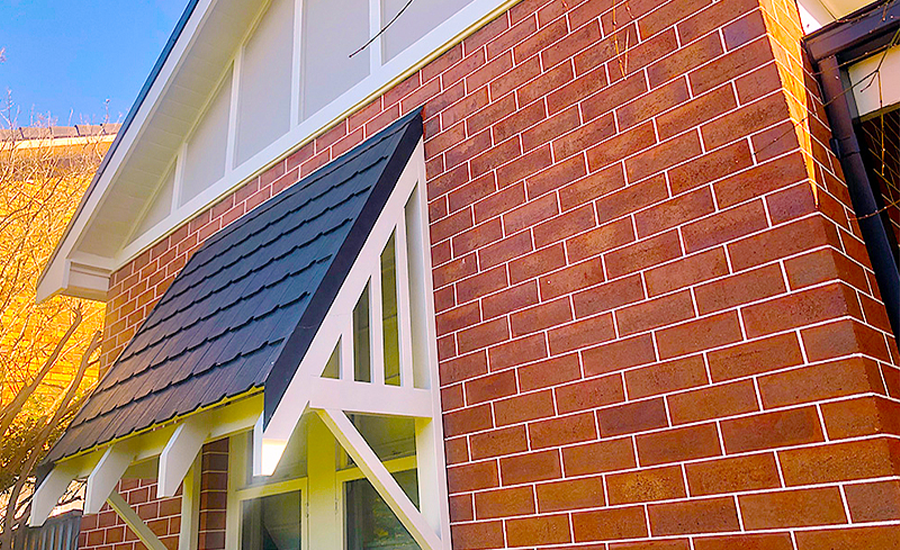
Several common mistakes can arise when repointing brickwork, even for experienced professionals. Let’s break down these errors, which often occur during the process:
Incorrect Mortar Mix
One of the most frequent issues is using the wrong mortar mix. Mortar should be chosen based on the type of brick and the environmental conditions. If the mortar is too hard or soft compared to the bricks, it can lead to damage or insufficient bonding. To avoid water penetration, a general rule is to match the mortar’s hardness with the original brickwork.
Overwetting the Bricks
Wetting the bricks before repointing is essential for good adhesion. However, its excess could weaken the bond between the block and the mortar mix since it will have weakened the mortar mix. The moisture content has to be perfect, and one should not wet the bricks too much, especially when it is cold.
Inconsistent Mortar Depth
Failure to lay the mortar to the same depth can result in the formation of a weak point in the wall. The depth should ideally match the original joints, typically 10-15mm deep. Mortar should be packed firmly into the joints to ensure it bonds well, but overfilling or underfilling can compromise the strength of the repointing.
Not Cleaning the Joints Properly
Before applying fresh mortar, cleaning out the old mortar and debris from the joints is crucial. Failing to remove dust, loose particles, and remnants of old mortar can prevent the new mortar from bonding properly, leading to premature cracking or even detachment.
Inadequate Tooling of the Mortar
After placing the mortar, it’s essential to tool it to the correct profile for aesthetic purposes and to ensure proper weather resistance. Too much tooling can weaken the joint, while not tooling enough can lead to a rough, unattractive finish. The tooling process must be done carefully, using the proper technique for the specific joint style.
Working in Poor Weather Conditions
Repointing in wet, freezing, or extremely hot conditions is problematic. Rain will wash off the most applied mortar while freezing temperatures will check the mortar as it sets. On the other hand, hot temperatures tend to make the mortar set quickly, reducing its bond strength. Timing and when it is done are equally important, and weather factors play a big role in the result’s success.
What Is The Difference Between Pointing And Repointing?
Pointing refers to applying mortar to the joints between bricks or stones during the initial construction of a wall or structure. It ensures a smooth and durable finish that holds the masonry together. Repointing involves repairing or replacing the old, deteriorated mortar in existing masonry to restore its strength and appearance.
| Aspect | Pointing | Repointing |
|---|---|---|
| Definition | Applying mortar to joints during construction. | Repairing or replacing old mortar in existing masonry. |
| Purpose | To create strong, weather-resistant joints. | To restore integrity and prevent further deterioration. |
| Timing | Done during the initial building phase. | Done as maintenance on older structures. |
How Do I Stop My Repointing From Cracking?
To avoid cracking in your repointing, use the correct discharge of mortar similar in hard nature to the associated brickwork. I also learned that one should not wet the bricks or mortar too much because it will weaken the bond. Furthermore, verify the joint depth and do not over-tool the mortar since it will generate stress. Lastly, apply repointing in good weather conditions; do not repoint during hot, cold, or wet weather since it slows down the setting of the mortar.
What Are The Risks Of Delaying Repointing Work?
Several dangers are associated with postponing repointing work, such as water penetration harming or spoiling brick surfaces and possible mold and mildew formation. This may also lead to some structural disorders within spaces with weakened mortar, leading to more damage or even complete collapse. Third, if repointing is done later than it should be, then the cost of the repair will be even higher because the damage itself continues to progress. Delays can also create conditions that promote insect infestations or cause energy efficiency to drop due to weakened insulation. Lastly, functionality declines as the mortar cracks or is entirely missing, which leaves an eye sore.
Why Choose Sardar Restoration Corp For Repointing?
The reasons why Sardar Restoration Corp is the right option to go for repointing services are that we guarantee the quality of our work and deliver quality solutions. We ensure we utilize quality and workable materials and practical working procedures to enhance the strength and looks of the masonry work. Our team has mastered applying mortar after years of offering our services in repairing and repointing brick or stone houses. We are proud of our ability to deliver on time without adversely affecting the lives of our customers and delivering high-quality and long-lasting repointing that improves the architectural value of your property.
Trust Sardar Restoration Corp for affordable, professional repointing services that stand the test of time. Contact us today for a consultation!
Wherever you are, our services are available to meet your local needs. Contact us today at (+1) 917-355-8556 or sardarrestoration@gmail.com, or visit us at 2770 Fish Ave, Bronx, NY 10469, United States. Let us bring excellence to your next project!
FAQs
What happens if you don’t repoint?
If repointing is neglected, water can penetrate through cracks in the mortar, causing extensive damage to the brickwork and structure. This may lead to mold growth, rotting, and even the weakening of the building’s foundation.
What are the signs of deteriorating mortar joints?
Deteriorating mortar joints often show up as visible cracks, loose or missing mortar, and damp patches on interior walls. Vegetation growth, like moss or algae, in the mortar joints also signals moisture penetration and weakening.
Brooklyn homes, especially older brownstones, often experience these signs earlier. See why mortar erosion happens faster there.
What time of year is best for repointing?
The best time for repointing is during dry, moderate weather, typically in spring or early fall. Extreme heat, cold, or wet conditions can interfere with proper curing of the mortar.
How urgent is repointing?
Repointing is urgent if you notice cracks or gaps in the mortar that allow water to infiltrate. If left untreated, these issues can lead to more severe damage and costly repairs.
Is there an alternative to repointing?
There is no true alternative to repointing as it directly addresses the issues with mortar joints. However, temporary fixes like patching can offer short-term relief but do not restore structural integrity.
Can you repoint over old mortar?
Repointing involves removing old, deteriorated mortar before applying fresh mortar. You cannot properly repoint over existing mortar without first clearing the joint to ensure proper bonding.
👉 For a detailed explanation of why this step is critical, read more about the risks of repointing over old mortar.
How messy is repointing?
Repointing can be quite messy, as it involves cleaning out old mortar, dust, and debris. Fresh mortar is also applied, which may splatter or spill onto surrounding areas.
How long does repointing last?
Repointing can last between 20 and 30 years, depending on the quality of the work and environmental factors like weather exposure. Regular maintenance can extend its lifespan.
👉 For more details on what influences this lifespan, read the full breakdown here.
Can weathering patterns on bricks indicate repointing is required?
Yes, weathering patterns, such as discoloration or erosion of the brick, can indicate weakened mortar joints that need repointing. This is explained further in our guide on how weathering patterns signal the need for repointing.
How do you check for mortar damage before deciding to repoint?
We inspect joints for cracks, erosion, and signs of wear. Sometimes, we use moisture meters to detect hidden dampness, but not actual mortar damage.
What is the best product for repointing?
The best product for repointing is a mortar mix that matches the original in strength and composition. It’s crucial to select a mortar that works well with the type of brick or stone used in the structure.
Will repointing stop leaks?
Repointing helps stop leaks by sealing gaps and cracks in the mortar that allow water to infiltrate. It restores the integrity of the masonry, preventing further water damage.
What happens if it rains after repointing?
If it rains shortly after repointing, the fresh mortar may be washed away, weakening the bond and slowing down the curing process. It’s crucial to ensure the mortar has time to set before exposure to rain.
How can you identify brick-pointing issues in Bronx buildings?
In Bronx buildings, signs like cracked mortar, damp patches, or vegetation in joints usually indicate moisture infiltration. These are common in older structures, especially in areas where brick-pointing issues develop due to weather exposure and aging masonry.
What causes mortar joints to fail in Westchester’s historic homes?
In Westchester’s historic homes, mortar joints may fail due to age, extreme weather, or poor-quality materials used during construction. Over time, these factors weaken the mortar, and mortar joints tend to fail in Westchester’s historic homes, making repointing necessary.
